
Raumforschung und Raumordnung-Spatial Research and Planning
Scope & Guideline
Shaping policies through interdisciplinary insights.
Introduction
Aims and Scopes
- Interdisciplinary Research on Spatial Planning:
The journal publishes research that integrates various disciplines such as geography, urban planning, sociology, and economics to explore complex spatial issues. - Focus on Urban and Regional Development:
A significant emphasis is placed on urban and regional development processes, including the challenges of urbanization, rural development, and regional governance. - Sustainable Development and Climate Adaptation:
The journal consistently addresses themes related to sustainability, climate change adaptation, and the integration of ecological considerations into spatial planning. - Public Participation and Governance:
Research often explores the role of public participation in planning processes, governance structures, and the implications of citizen engagement in spatial decision-making. - Technological Integration in Planning:
The incorporation of digital tools and technologies in planning practices is a recurring theme, examining how these innovations can enhance planning efficiency and community involvement. - Socio-Spatial Equity and Justice:
The journal investigates issues of social justice and equity in spatial planning, focusing on how spatial policies can address inequalities within urban and rural contexts.
Trending and Emerging
- Digital Transformation in Planning:
There is a notable increase in research exploring the role of digital technologies in spatial planning, including e-participation and smart city initiatives, reflecting the growing importance of technology in urban governance. - Climate Resilience and Sustainability:
Emerging themes focus on climate resilience, with studies examining how urban and regional planning can adapt to climate change and promote sustainable practices. - Rural Development and Community Engagement:
Research that emphasizes rural development, particularly through community-led initiatives and participatory approaches, has gained traction, highlighting the significance of rural areas in spatial planning. - Social Justice and Equity in Urban Planning:
An increasing focus on social justice, equity, and the implications of planning decisions on marginalized communities reflects a broader societal concern for inclusivity in urban environments. - Agonistic Planning and Conflict Resolution:
The journal shows a rising interest in agonistic planning theories, exploring how conflict and power dynamics shape planning processes, which is particularly relevant in diverse and pluralistic societies.
Declining or Waning
- Historical Analysis of Spatial Planning:
Research focusing on historical perspectives of spatial planning, particularly related to periods such as the Third Reich, is less frequently published, indicating a potential shift towards contemporary issues. - Traditional Land Use Planning:
The traditional approaches to land use planning, which may have been more prevalent in earlier publications, seem to be overshadowed by innovative and participatory methods. - Economic Development Without Environmental Considerations:
The journal appears to be moving away from purely economic development discussions that do not address environmental sustainability, as newer publications focus more on integrated and sustainable approaches. - Comparative Studies of International Planning Practices:
While comparative analyses of planning practices across different countries were once a staple, this focus seems to be diminishing in favor of more localized and context-specific studies. - Rigid Planning Frameworks:
Research advocating for rigid or prescriptive planning frameworks is less common, with a growing preference for adaptive and flexible planning strategies that respond to dynamic urban and rural environments.
Similar Journals
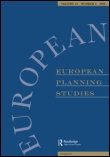
EUROPEAN PLANNING STUDIES
Pioneering Research in Urban Development and PolicyEUROPEAN PLANNING STUDIES is a leading journal in the field of urban studies, published by Routledge Journals, Taylor & Francis Ltd. Since its inception in 1993, this esteemed publication has been pivotal in advancing the discourse on geographical, planning, and developmental issues across the European landscape. With a commendable 2023 Q1 rating in the Geography, Planning, and Development category and a remarkable rank of #88 out of 821 in Scopus, the journal is recognized for its rigorous peer-reviewed articles that provide innovative insights and critical analyses. Although the journal does not offer open access, it caters to a diverse readership, including researchers, professionals, and students, ensuring a comprehensive understanding of contemporary planning challenges and strategies. The journal's objectives include fostering interdisciplinary dialogue among planners, policymakers, and academics, making it an essential resource for those engaged in shaping sustainable urban environments and informed spatial governance in Europe and beyond.

Journal of Geographical Sciences
Unveiling Insights in Earth Sciences Since 2001.Welcome to the Journal of Geographical Sciences, a premier publication in the field of Earth and Planetary Sciences that has consistently demonstrated its impact and relevance since its inception in 2001. Published by SCIENCE PRESS, this esteemed journal is recognized for its rigorous peer-review process and high-quality research, achieving an impressive Q1 ranking in the 2023 category of Earth and Planetary Sciences (miscellaneous). With the latest Scopus ranking placing it at Rank #13 of 159, putting it in the top 8% of its field, the journal serves as a vital platform for disseminating significant findings and innovative methodologies in geography, environmental studies, and related disciplines. Although not an open-access journal, it offers exceptional visibility through its publication standards and accessibility in academic databases. Based in Beijing, China, the Journal of Geographical Sciences continues to pave the way for scholarly discourse and collaborative research, appealing to researchers, practitioners, and students dedicated to advancing our understanding of geographical phenomena.
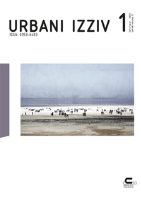
Urbani Izziv-Urban Challenge
Fostering Dialogue on Urban Challenges and InnovationsUrbani Izziv - Urban Challenge, a prominent journal in the field of urban studies and planning, is published by the Urban Planning Institute of the Republic of Slovenia. Established in 1993, this Open Access journal aims to foster the dissemination of cutting-edge research and innovative ideas in architecture, cultural studies, and urban development. With an impressive impact, it holds a Q2 ranking in both Architecture and Cultural Studies, while maintaining a solid presence in Geography, Planning and Development, and Urban Studies categories. As of 2023, it ranks within the top 25% of journals in the Cultural Studies discipline, highlighting its pivotal role in shaping urban discourse. Researchers and practitioners alike will find the journal an invaluable resource for exploring the intertwined challenges of urbanization, cultural evolution, and sustainable development. With an expansive convergence from 1994 to 2024, it continues to attract influential contributions that illuminate the dynamics of urban life in Slovenia and beyond.
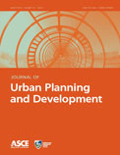
JOURNAL OF URBAN PLANNING AND DEVELOPMENT
Advancing Knowledge in Urban Design and Engineering.The JOURNAL OF URBAN PLANNING AND DEVELOPMENT, published by the ASCE-AMER SOC CIVIL ENGINEERS, stands as a pivotal platform in the realms of urban studies, civil and structural engineering, and development. With an ISSN of 0733-9488 and E-ISSN of 1943-5444, this journal aims to disseminate high-quality research addressing critical urban planning challenges, fostering innovative solutions, and contributing to sustainable development practices. Spanning from its inception in 1979 to the anticipated issues up to 2024, the journal proudly occupies the Q2 category across multiple disciplines, including Civil and Structural Engineering, Development, Geography, Planning and Development, and Urban Studies. Its noteworthy Scopus rankings reflect its influence, notably being positioned in the 76th percentile in Urban Studies. With no open access options currently available, the journal remains a selective forum for scholarly discourse, attracting researchers, professionals, and students eager to engage with cutting-edge developments in urban planning and design.
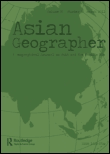
Asian Geographer
Navigating the Complexities of Asian GeographyAsian Geographer is a prominent journal published by Routledge Journals, Taylor & Francis Ltd, recognized for its significant contributions to the field of geography, planning, and development. With an ISSN of 1022-5706 and an E-ISSN of 2158-1762, the journal offers a platform for high-quality, peer-reviewed research that addresses vital geographical issues, particularly within the Asian context. The journal's commitment to fostering informed discourse is reflected in its Q2 category ranking in the field of Geography, Planning and Development as of 2023, and its Scopus ranking of #274 out of 821 in the same category, placing it in the 66th percentile. The Asian Geographer serves as an essential resource for researchers, professionals, and students alike, ensuring access to a wealth of knowledge that influences policy and practice. It continues to publish original research and reviews as it converges to present significant developments in geography from 1982 to 1987, 1991 to 1995, and from 2015 to 2024. This journal is vital for anyone looking to deepen their understanding of geographical dynamics in Asia and beyond.

Geografia-Malaysian Journal of Society & Space
Pioneering Insights into Regional Studies and Spatial PracticesGeografia-Malaysian Journal of Society & Space, published by the esteemed Universiti Kebangsaan Malaysia through its Faculty of Social Sciences & Humanities, stands as a vital platform for scholarly discourse in the fields of geography, social sciences, and spatial studies. With its ISSN 2180-2491 and E-ISSN 2682-7727, this journal emphasizes the importance of regional studies, fostering a deep understanding of societal dynamics within the Malaysian context and beyond. Although currently lacking impact factor and HIndex data, the journal is poised to contribute significantly to academic discussions, urging researchers, professionals, and students to explore spatial complexities influencing social structures. Geografia aims to publish high-quality, peer-reviewed works, focusing on innovative theoretical and empirical research that addresses contemporary issues in society and space. By promoting open access to its content, it ensures that knowledge is freely available, furthering academic engagement and collaboration in the global scholarly community.
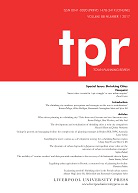
TOWN PLANNING REVIEW
Leading the Discourse in Urban DevelopmentTOWN PLANNING REVIEW is a prestigious academic journal published by Liverpool University Press, focusing on pivotal research in the fields of urban studies and planning. Established in 1977, this journal has become a leading platform for the exploration of contemporary urban challenges and innovative planning solutions, aligning with its impressive Q1 rankings in both Geography, Planning and Development and Urban Studies. With a Scopus rank of 73 out of 279 in Urban Studies, it holds a strong presence in the academic community, making significant contributions to the scholarship and practice of town planning. Although it is not an open-access journal, it continues to reach a global audience by disseminating high-quality, peer-reviewed research. Researchers, professionals, and students interested in advancing their understanding of urbanization processes, planning methodologies, and policy implications will find TOWN PLANNING REVIEW an invaluable resource as it bridges theoretical insights and practical applications in the dynamic landscape of urban development.
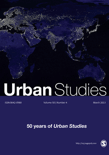
URBAN STUDIES
Exploring the Dynamics of Urban Life and SustainabilityURBAN STUDIES, published by SAGE Publications Ltd, stands as a premier journal in the field of urban studies and environmental science, evidenced by its prestigious Q1 ranking in both categories for 2023. With an ISSN of 0042-0980 and an E-ISSN of 1360-063X, this UK-based journal has been disseminating pivotal research since its inception in 1964, and will continue to do so until 2024. As a leader in the social sciences, it ranks #11 out of 279 in the field of Urban Studies and #15 out of 219 in Environmental Science, achieving remarkable percentiles of 96% and 93% respectively. Although not an open-access journal, URBAN STUDIES provides a platform where scholars, practitioners, and students can engage with cutting-edge research, critical analyses, and innovative solutions addressing the complexities of urban environments. By publishing studies that encompass economic, social, and environmental dimensions of urbanization, the journal contributes significantly to the discourse on sustainable development and urban planning.
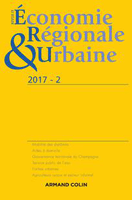
Revue d Economie Regionale et Urbaine
Advancing insights in regional and urban economics.Revue d Economie Regionale et Urbaine is a prestigious journal published by ARMAND COLIN, dedicated to advancing the field of regional and urban economics. Renowned for its rigorous peer-reviewed articles, this journal provides a vital platform for scholars, practitioners, and students to explore contemporary issues, methodologies, and case studies in regional development, urban policy, and economic geography. With its ISSN 0180-7307 and E-ISSN 2107-0865, the journal facilitates widespread dissemination of knowledge, although it currently does not offer open access options. Situated in Paris, France, Revue d Economie Regionale et Urbaine plays a critical role in fostering dialogue and innovation among academics and policymakers alike, contributing significantly to the understanding and enhancement of urban and regional economies.

Bitacora Urbano Territorial
Championing Open Access for a Collaborative Academic CommunityBitacora Urbano Territorial is an esteemed open-access journal published by Universidad Nacional de Colombia, dedicated to advancing research in the intricate fields of urban studies, geography, and the arts and humanities. Since its inception in 2009, this journal has become a vital platform for academics, practitioners, and students alike in analyzing and addressing the multifaceted dimensions of urbanization, spatial planning, and territorial development. With an evolving focus and a commitment to fostering scholarly dialogue, Bitacora Urbano Territorial proudly holds a Q2 ranking in Arts and Humanities (miscellaneous) and Q3 rankings in both Geography, Planning and Development and Urban Studies, reflecting its growing impact within the academic community. The journal welcomes contributions that explore innovative research, case studies, and theoretical advancements, providing a comprehensive reflection of urban transformations in Latin America and beyond. Emphasizing accessibility, the journal has embraced an open access model since 2016, ensuring that critical knowledge is disseminated widely to enhance understanding and promote collaboration across disciplines.